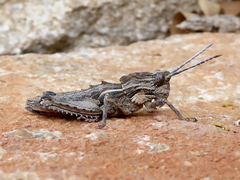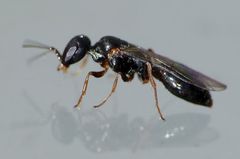European paper wasp
Polistes dominula
Polistes dominula, commonly known as the European paper wasp, is a species of social wasps belonging to the family Vespidae. It is widely distributed throughout Europe, including the Comunidad Valenciana, and has also been introduced to other continents. In the region, it is known as the avispa papelera.
The European paper wasp is easily recognizable by its distinct yellow and black body pattern. Below is a description of some key characteristics:
- Appearance: They typically have slender bodies, with a length ranging from 10 to 15 mm. Their coloration is predominantly black with striking yellow bands.
- Nesting habits: Polistes dominula builds paper-like nests by chewing wood fibers mixed with saliva. These nests can often be found under eaves or in sheltered areas in gardens and buildings.
- Social structure: These wasps live in colonies with a well-defined social hierarchy. A single queen leads the colony, attended by female workers responsible for feeding larvae and defending the nest.
- Diet: The European paper wasp primarily feeds on nectar and other sweet fluids, but it also preys on caterpillars and other small insects, providing a natural form of pest control.
Polistes dominula is an important species in the local ecosystem due to its role in controlling pest populations and pollinating flowers. Its widespread presence and distinctive appearance make it an easily noticeable member of the fauna in the Comunidad Valenciana.







